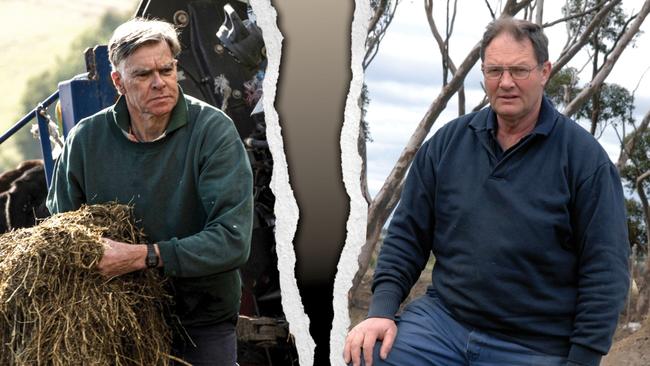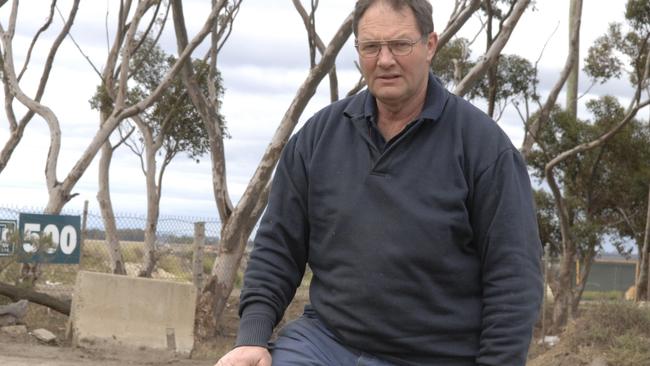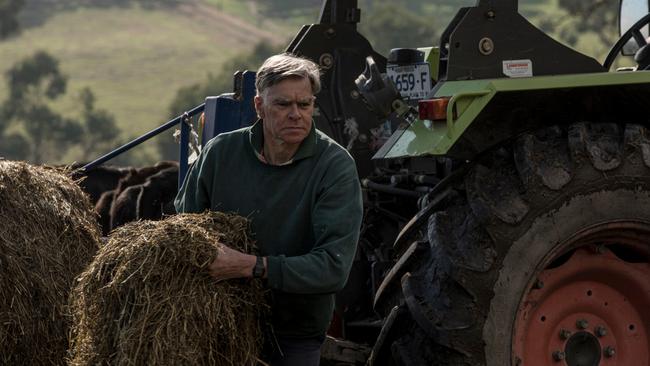Farmer lobbyists divided over state’s 40ha building rights plan
Members of the Victorian Farmers Federation’s land management committee are split over a farm building rights plan, with its chair trying to manage opposing views. Here, two members outline their arguments.

DEEP divisions are emerging between farmers over Andrews Government plans to wipe out rural landholders’ existing right to build a dwelling on 40ha or more, within 100km of Melbourne.
Members of the Victorian Farmers Federation’s land management committee are split on the issue, with its chair Gerald Leach trying to manage opposing views.
On one side are those who want the right to build a home on 40ha or more retained, given it helps underpin the value of their land and gives them the option to sell large parcels for reinvestment in the farm or retirement.
On the other are those who do not want to see land carved up into 40ha lots and commercial farming driven out by lifestylers wanting land within 100km of Melbourne.
The Weekly Times asked two of the VFF Land Management Committee’s key members, who sit on opposite sides of the fence on this issue, to explain their positions.
The VFF has until Friday next week to lodge its position on the 40ha rule and a raft of other planning reforms developed by Planning Minister Richard Wynne and his planning bureaucrats.
Alan McKenzie
Bulla farmer

1. Do you support the removal of landholders’ existing right to build a dwelling on 40ha or more in the farming zone, within 100km of Melbourne?
No – the removal of the right to construct a dwelling on farms of more than 40ha in the farming zone within 100 km of Melbourne should be resisted.
Council planning officers will require a consultant report to justify an application to build.
Council planners don’t have experience in farming and hence the cost of consultant reports typically are between $15,000 and $30,000.
As well watch out for the EPBC (Environment Protection and Biodiversity Conservation) Act whereby the Victorian Government don’t have to find endangered species, but simply say they are there, bringing in a whole suite of controls on the farm.
While the Victorian Government is trying to control the construction of houses on farms, which in some cases are less than marginal, they are going gangbusters on (the subdivision) of market-garden-quality land southeast of Melbourne.
This type of restriction allows the local council and government officers, all of whom lack farming knowledge or empathy, to impose all sorts of restrictions on the farming community.
2. What impact would such a proposal have on land values in the farming zone?
Land values will stagnate and therefore can create a situation with lending institutions who may question value of assets when refinance is sought.
This will undoubtedly create issues for the farming community in conducting business, transitioning to succession or retirement.
Despite farmers claiming their property is their superannuation government planners vehemently reject this notion.
Victorian Government controls will serve to keep farming properties low in value which will allow government acquisitions for the greater good to be at low compensation values.
This policy will treat farming businesses differently to the rest of the business community.
Marginal farming land, which is near urban development, will be devalued as no farmer will want to purchase it to operate it as a farm with all the restrictions imposed by government. This will stop these landowners selling to shift elsewhere in the farming community.
The only farming landowners to win from land sales will be those within urban growth boundaries.
David Gibb
Red Hill beef producer

1. Do you support the removal of landholders’ existing right to build a dwelling on 40ha or more in the farming zone, within 100km of Melbourne?
“Yes — the greatest threat to continuing agriculture is the threat of rural residential.
Rural residential displaces agriculture because the value of residential amenity outbids the agricultural productivity and makes it harder for farmers to expand their operations.
It also:
INCREASES the level of rates farmers pay, because of the higher land prices;
MAKES it even harder for young couples to afford to get into agriculture;
FREQUENTLY causes more pest plants and animals to be introduced; and
LEADS to more complaints about the sights, sounds and smells of agriculture, plus agricultural machinery on local roads
Weekenders are the principal cause of the problem.
The Green Wedge Zone addressed this problem upon its introduction in 2003.
With the expansion of freeways out of Melbourne, rural residential has leapfrogged this zone, hence the move to similarly restrict dwellings within 100km of Melbourne.
If you need a dwelling for agriculture, the permit is granted by the shire. Note that in Europe, you can only live on the land if you are farming it.
The claim that anything over 40ha can have a house without a permit is a furphy, because the zone provisions say “area specified in schedule” first (which in many parts of Victoria is 80ha or 120ha or more), then the default 40ha min.
Further, the purpose of the (farming) zone states it is “to ensure that non-agricultural uses, particularly dwellings, do not adversely affect the use of land for agriculture.
It also must meet other requirements, so a dwelling approval has never been a fait accompli.
In addition, tenement controls on dwellings were much more prevalent before the current controls, which were much tougher again.
So in many respects, the proposed changes within 100km of Melbourne resemble a reversion to the status quo, before the Government responded to the speculators and property developers and watered down the planning provisions that protected agriculture from urban uses.
If you are a farmer and agriculture has been good to you, wouldn’t you want to see a young farmer get a chance in life, and not be priced out of the market?
2. What impact would such a proposal have on land values in the farming zone?
Contrary to some false claims, there is no financial impost or compliance impact on farmers, caused by these proposals. For the reasons given above, they potentially relieve farmers of some of the cost burden.
The Green Wedge Zone is more protective of farming than the Farming Zone, because many urban uses that displace agriculture are prevented in it.
There is no evidence the same controls that currently exist in GWZ have an impact on prices. On the contrary, The Weekly Times reported last year that GWZ properties on the Mornington Peninsula, Macedon Ranges and Whittlesea recorded the highest values, per hectare, in the state.
Do we want to produce clean food and fibre in Australia on our agricultural land, with low carbon miles, or do we want to import dodgy food?
MORE


